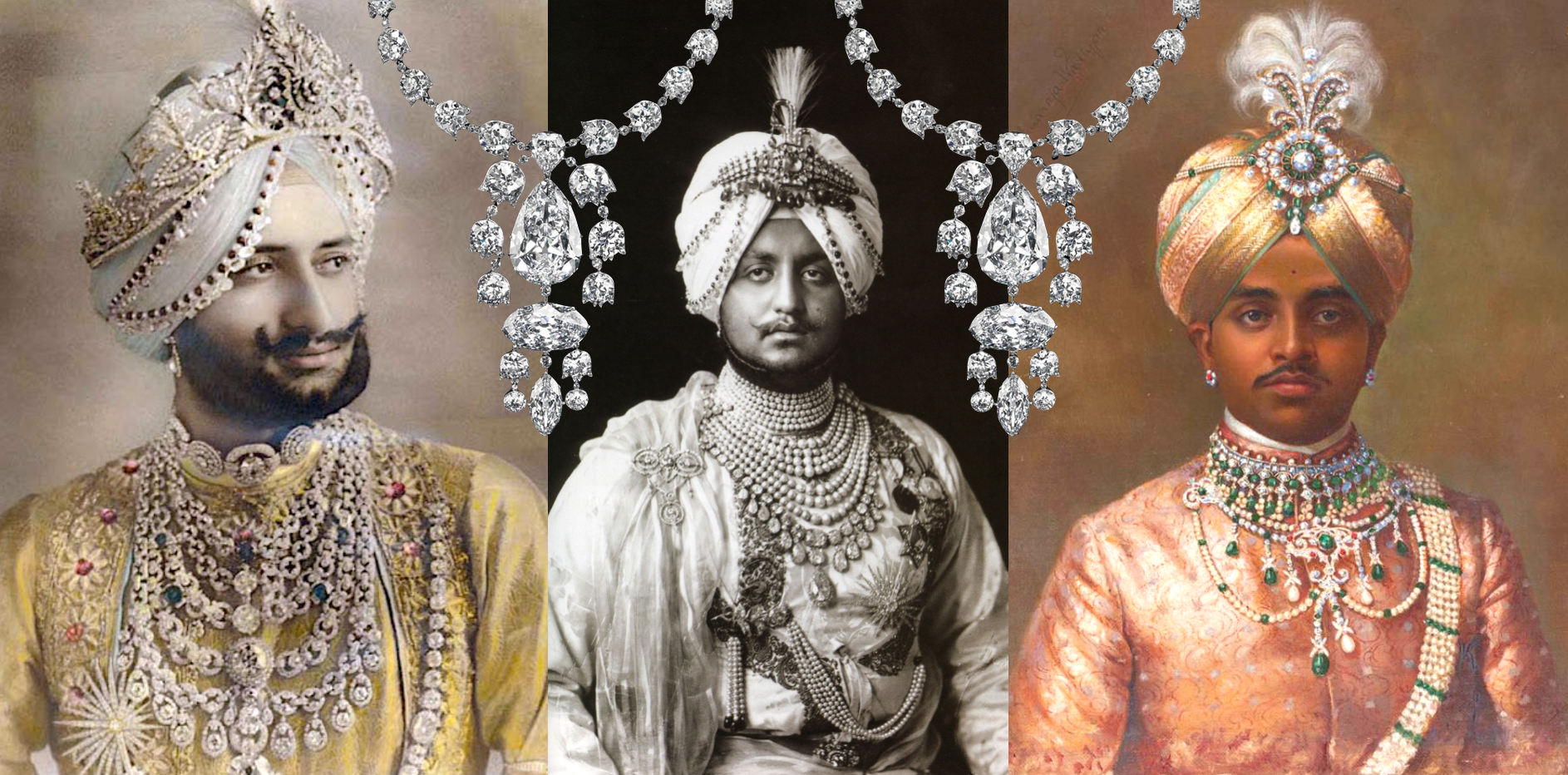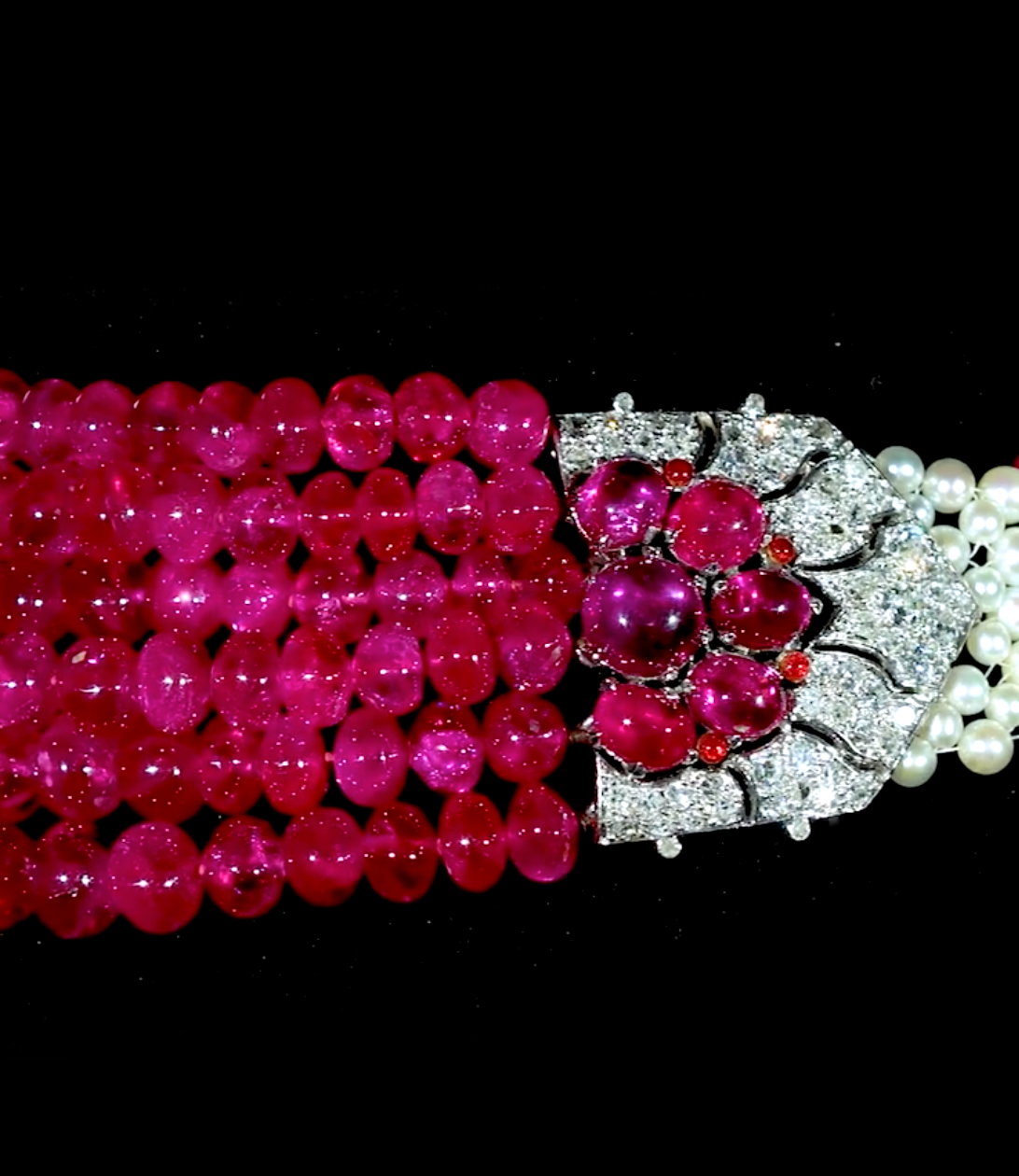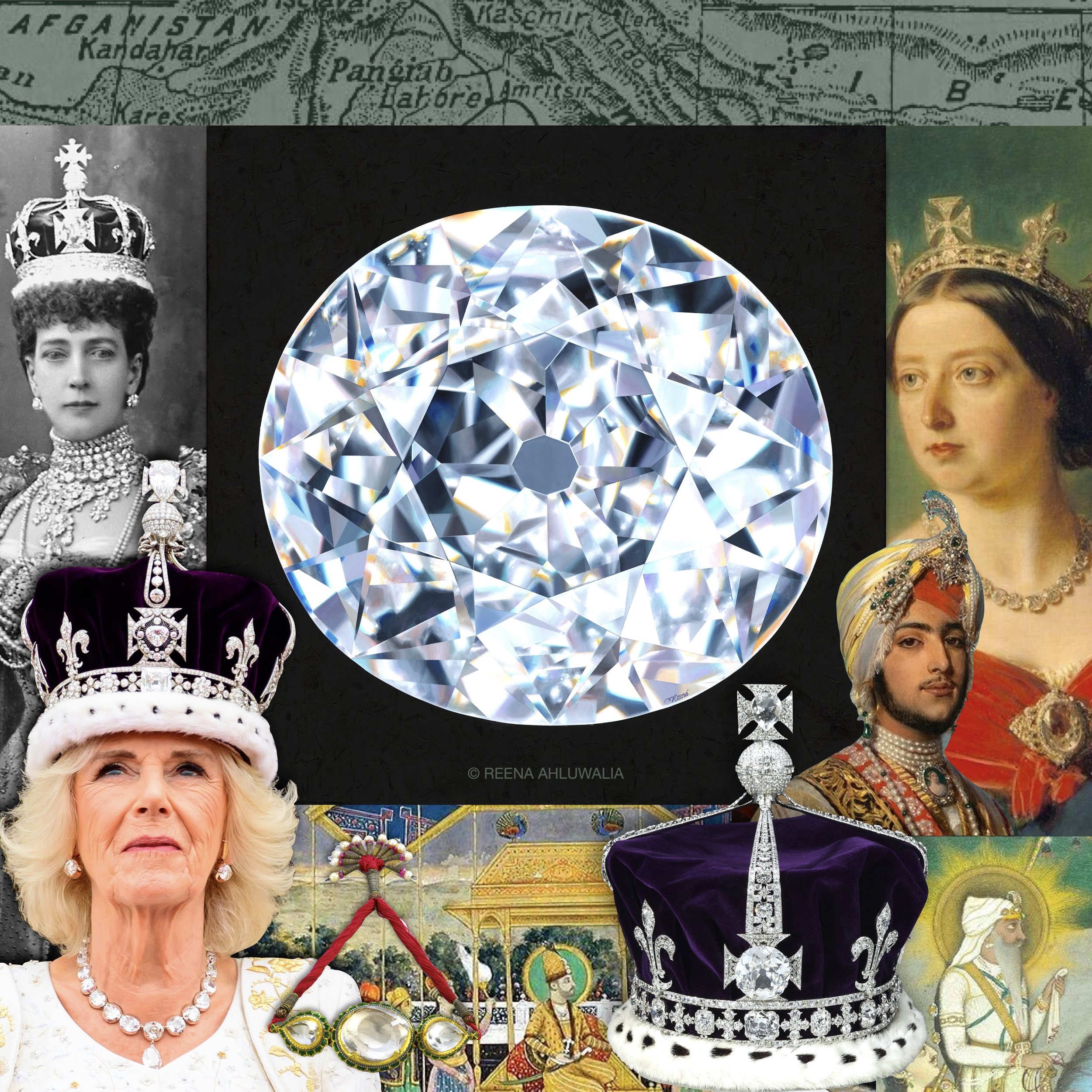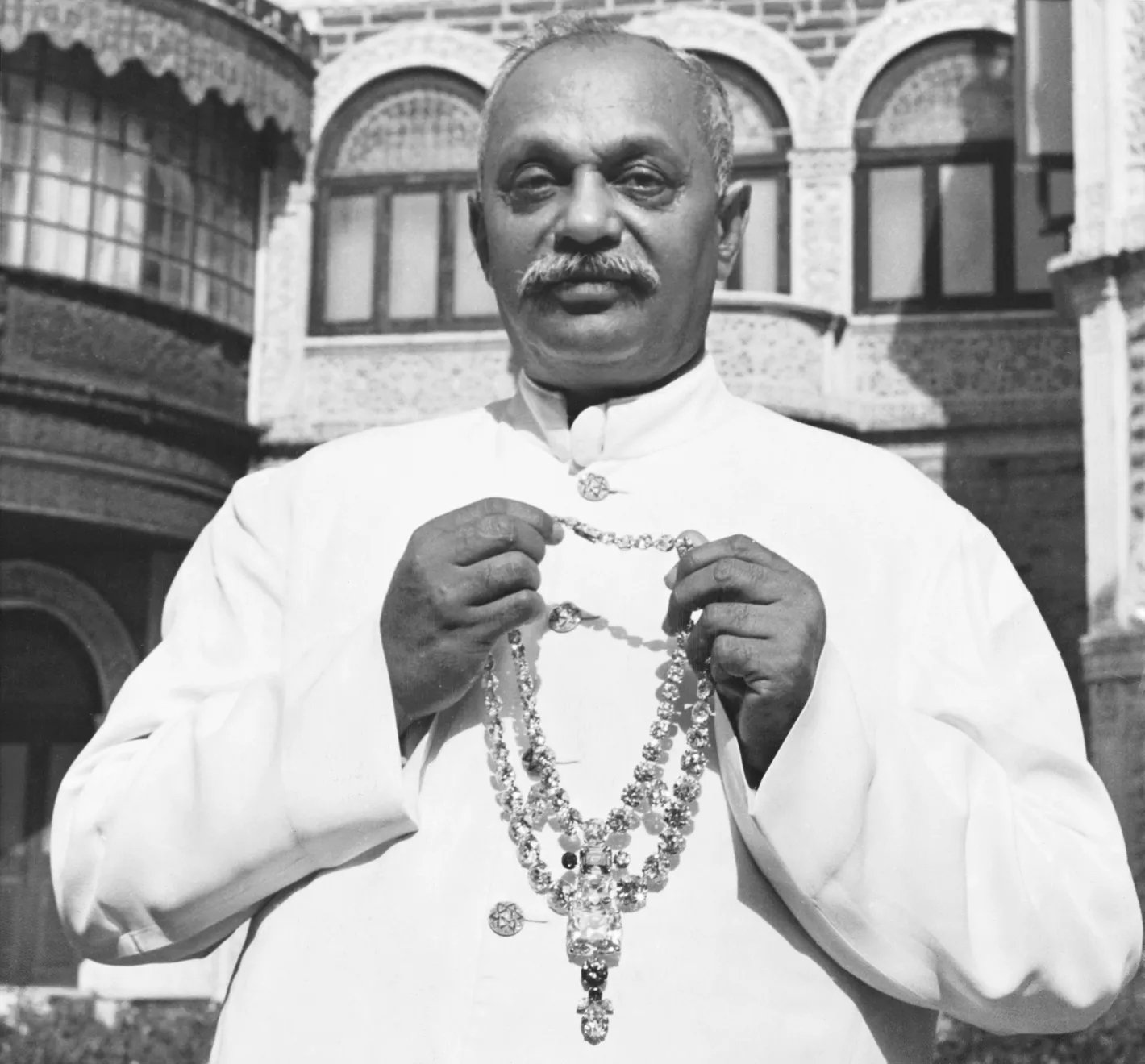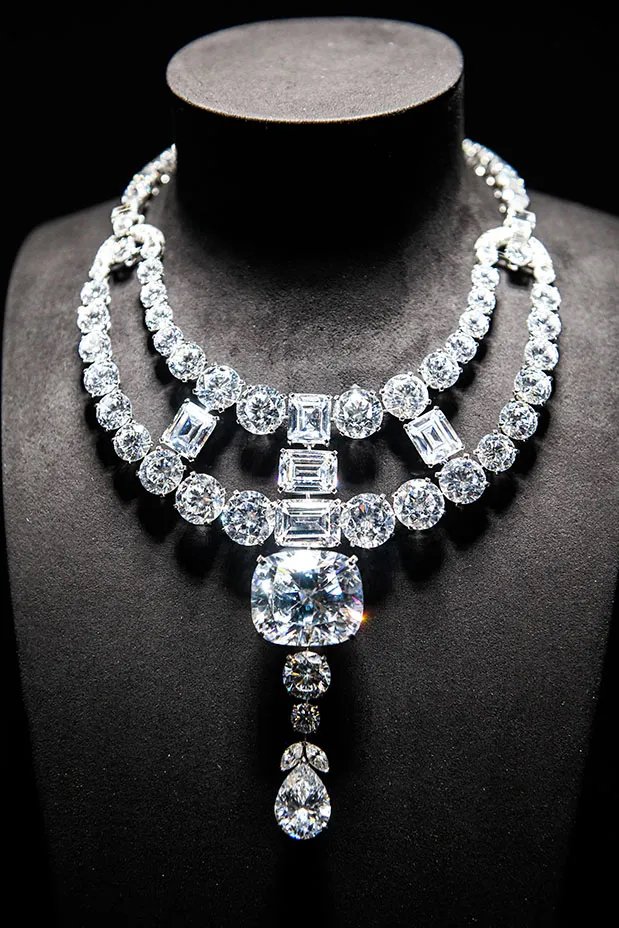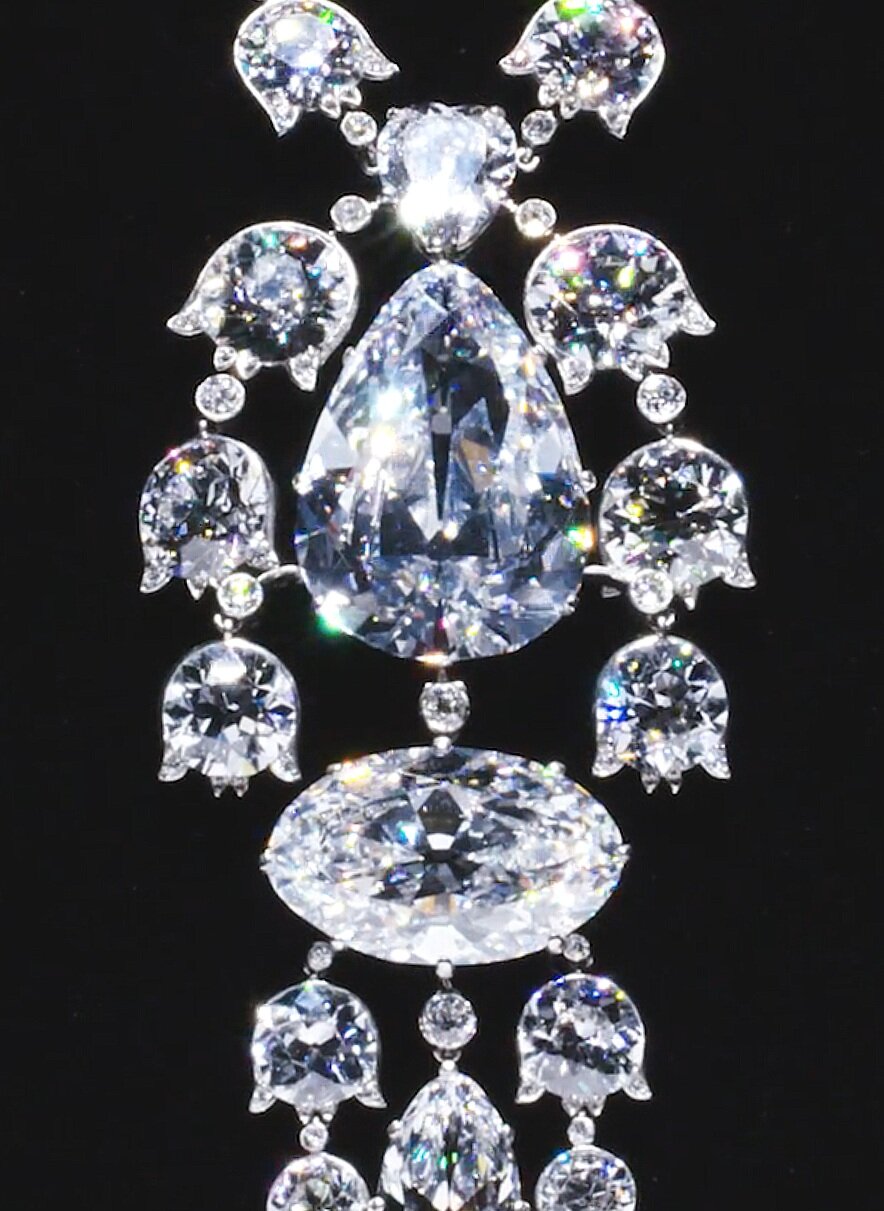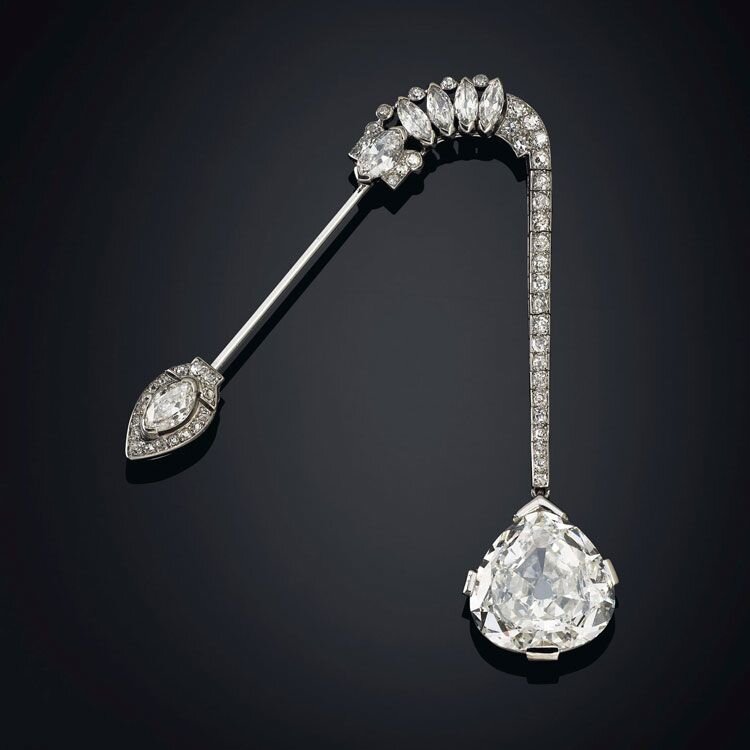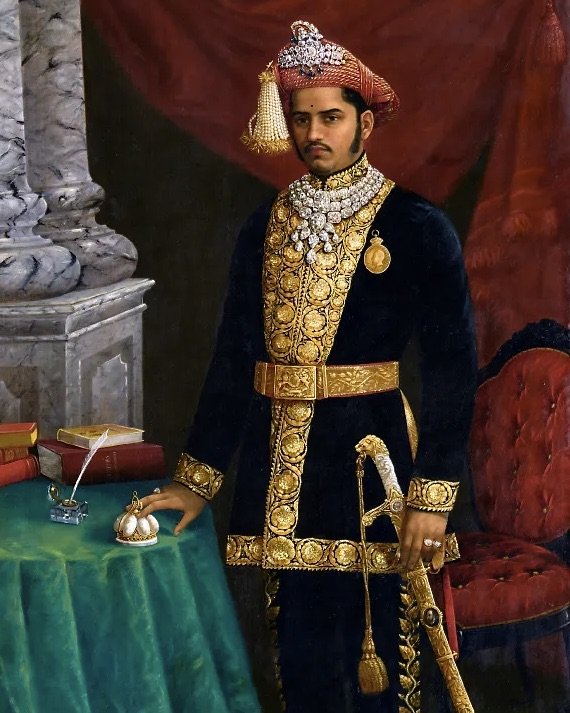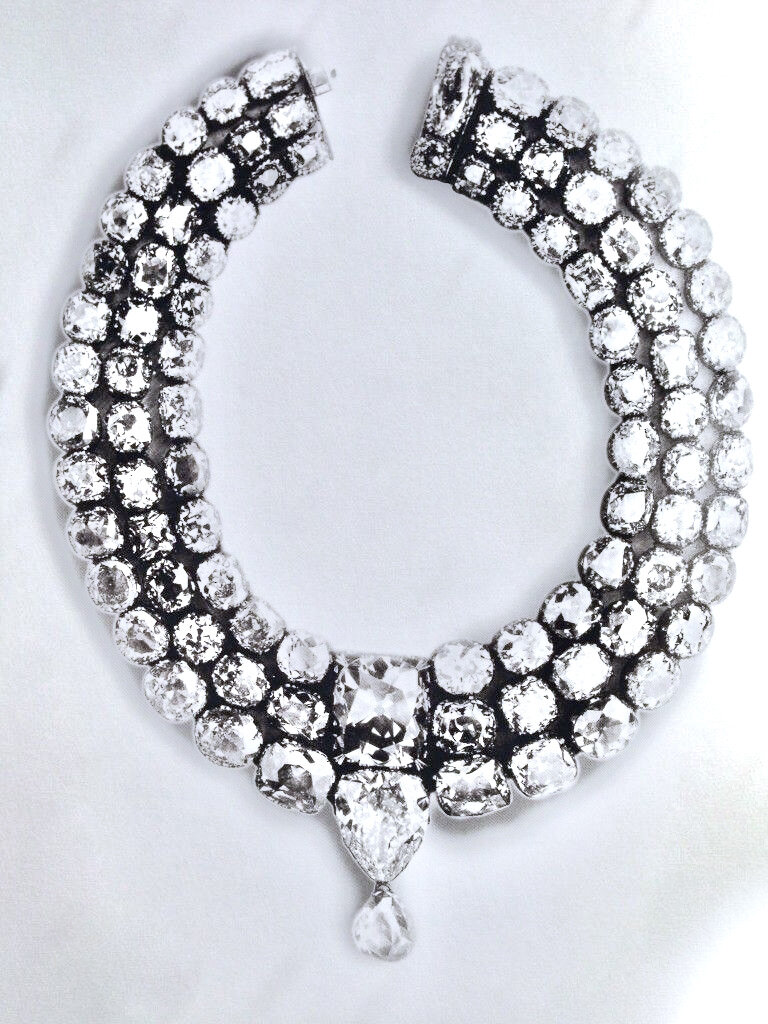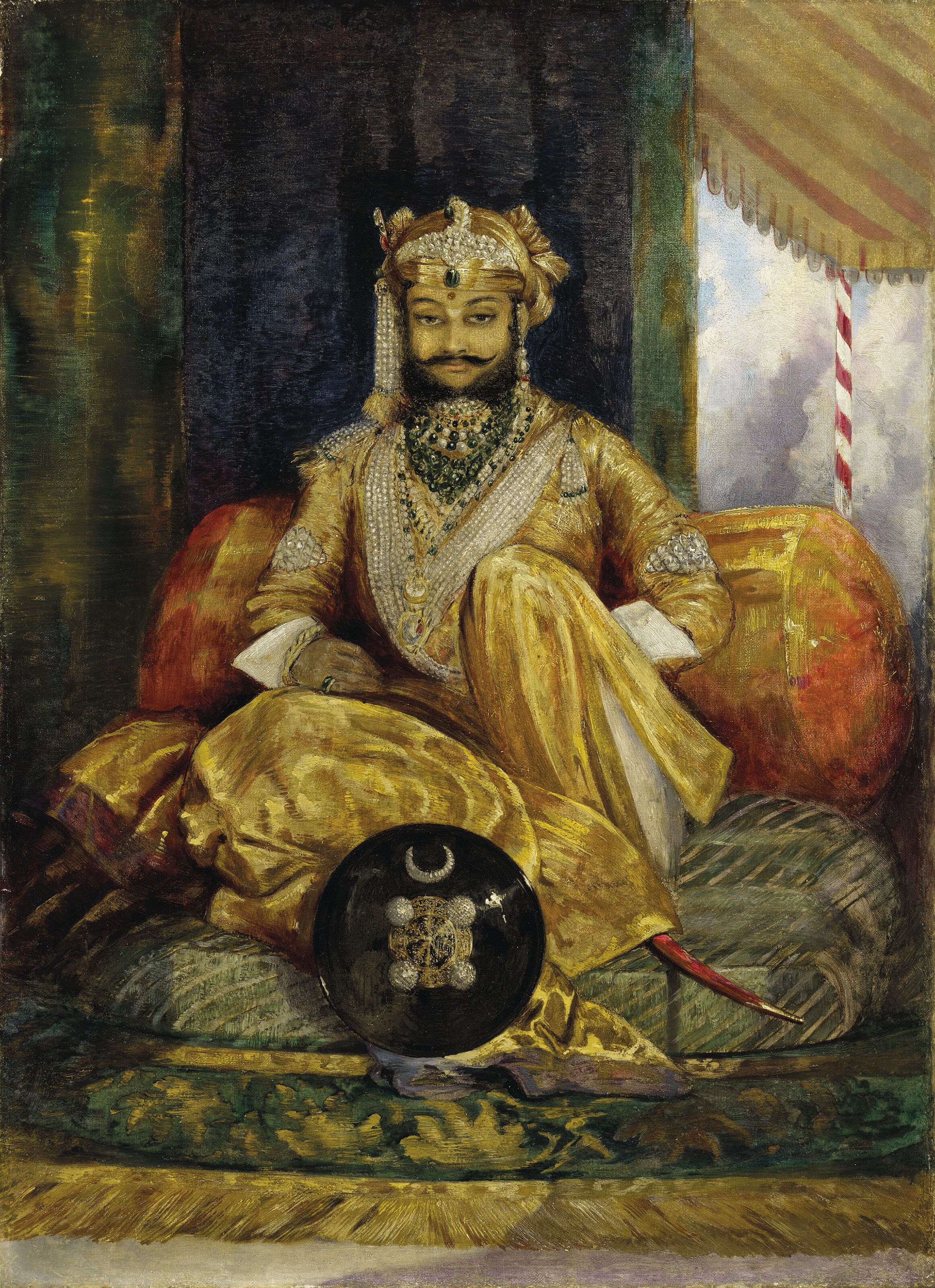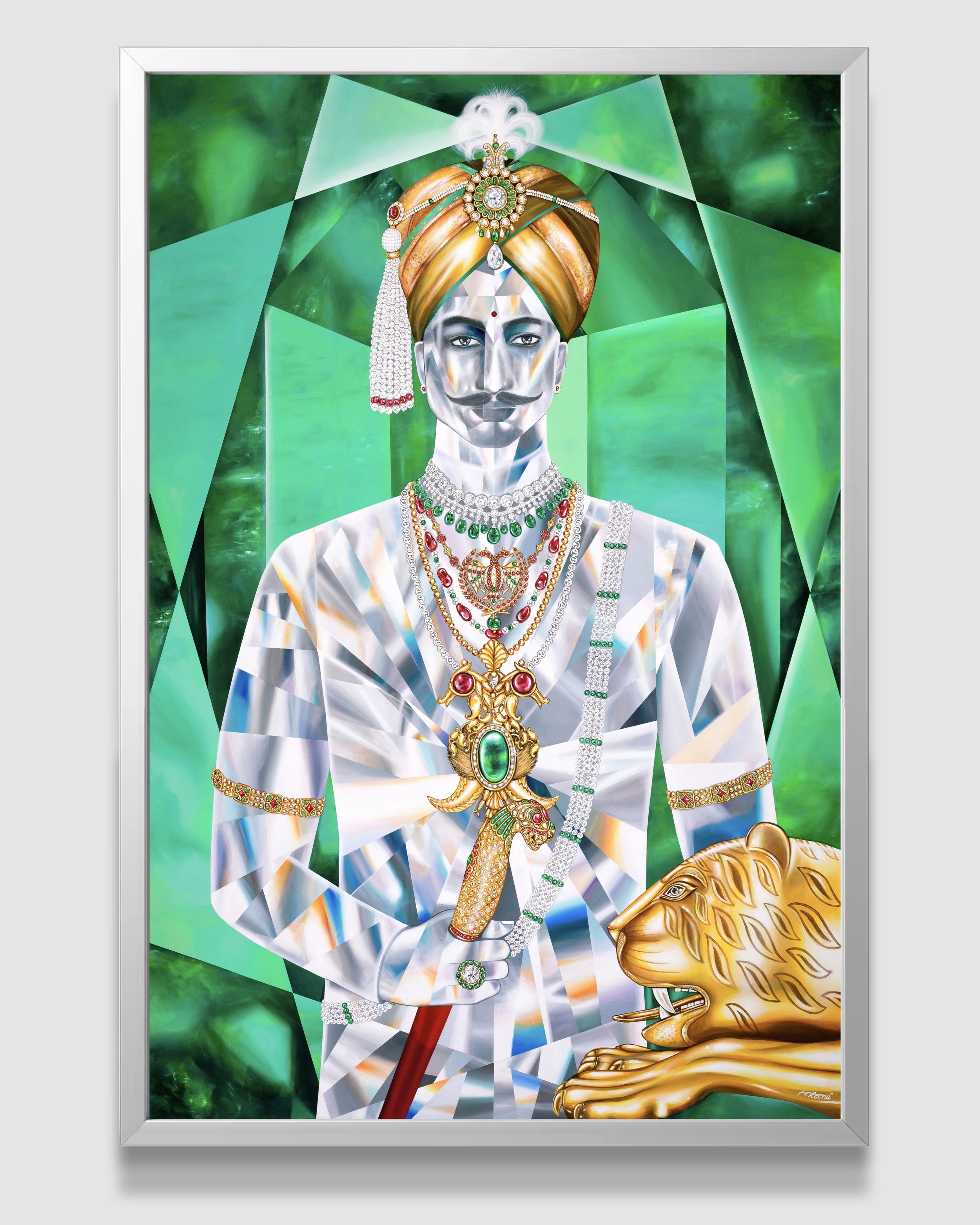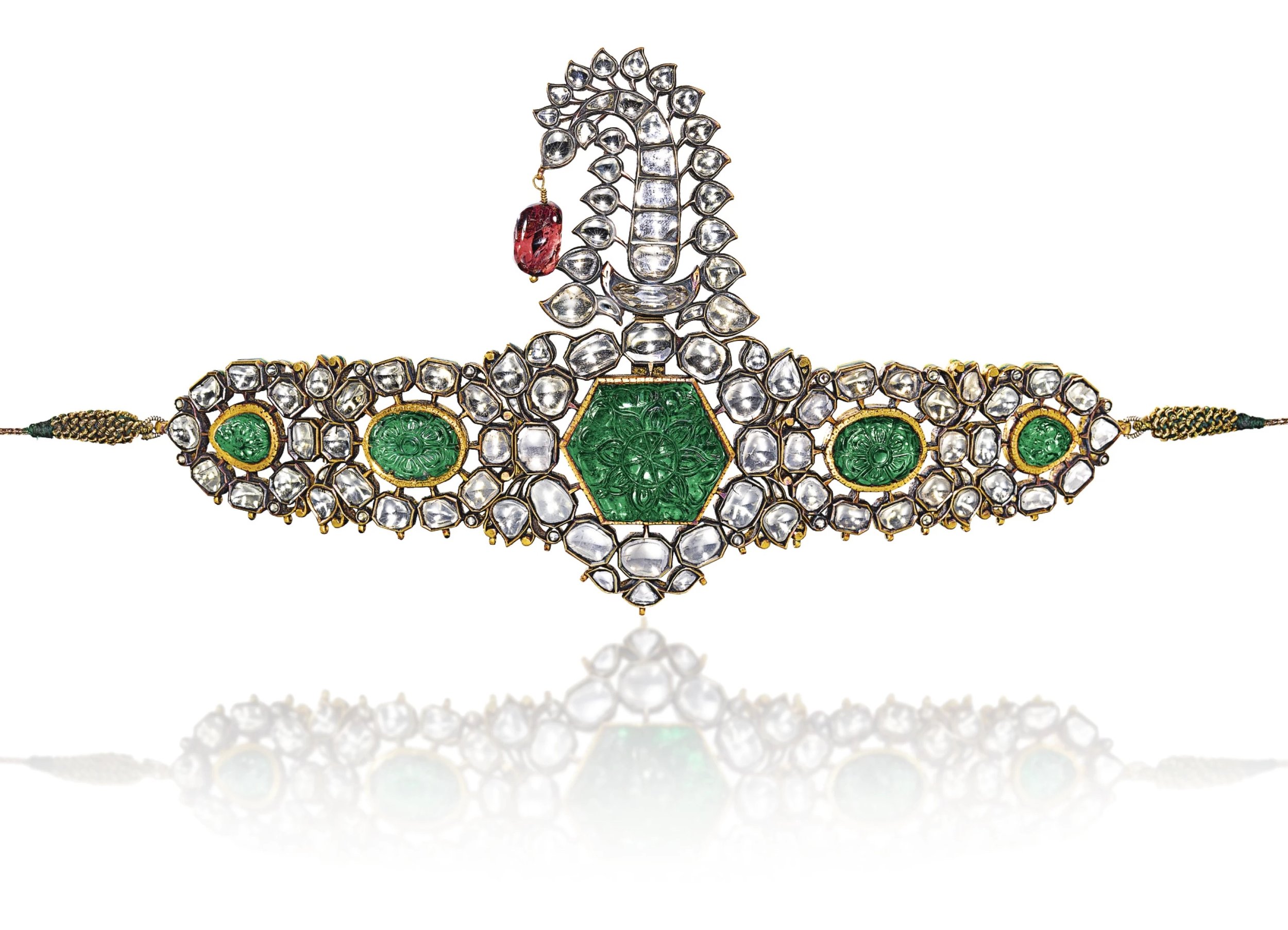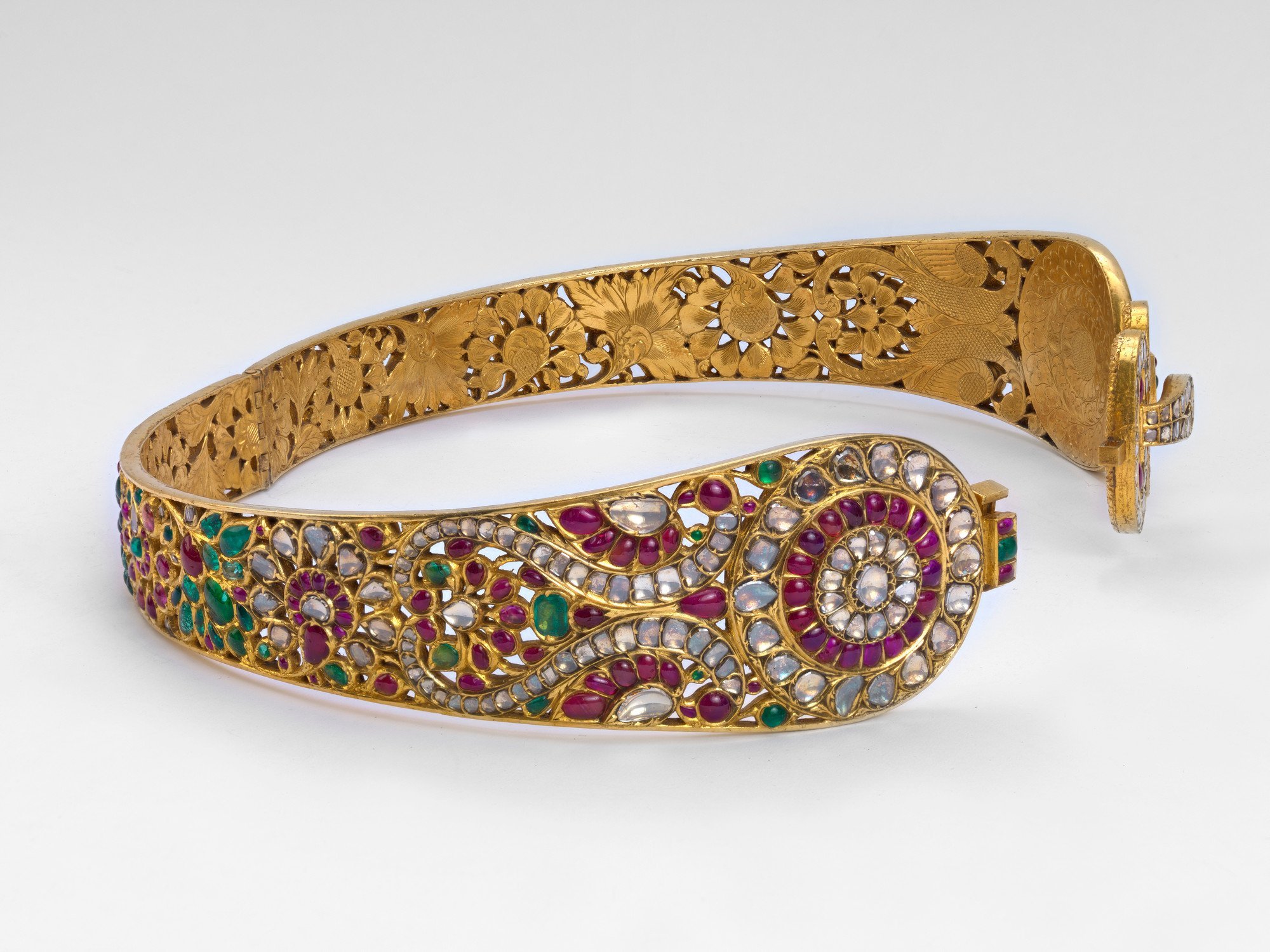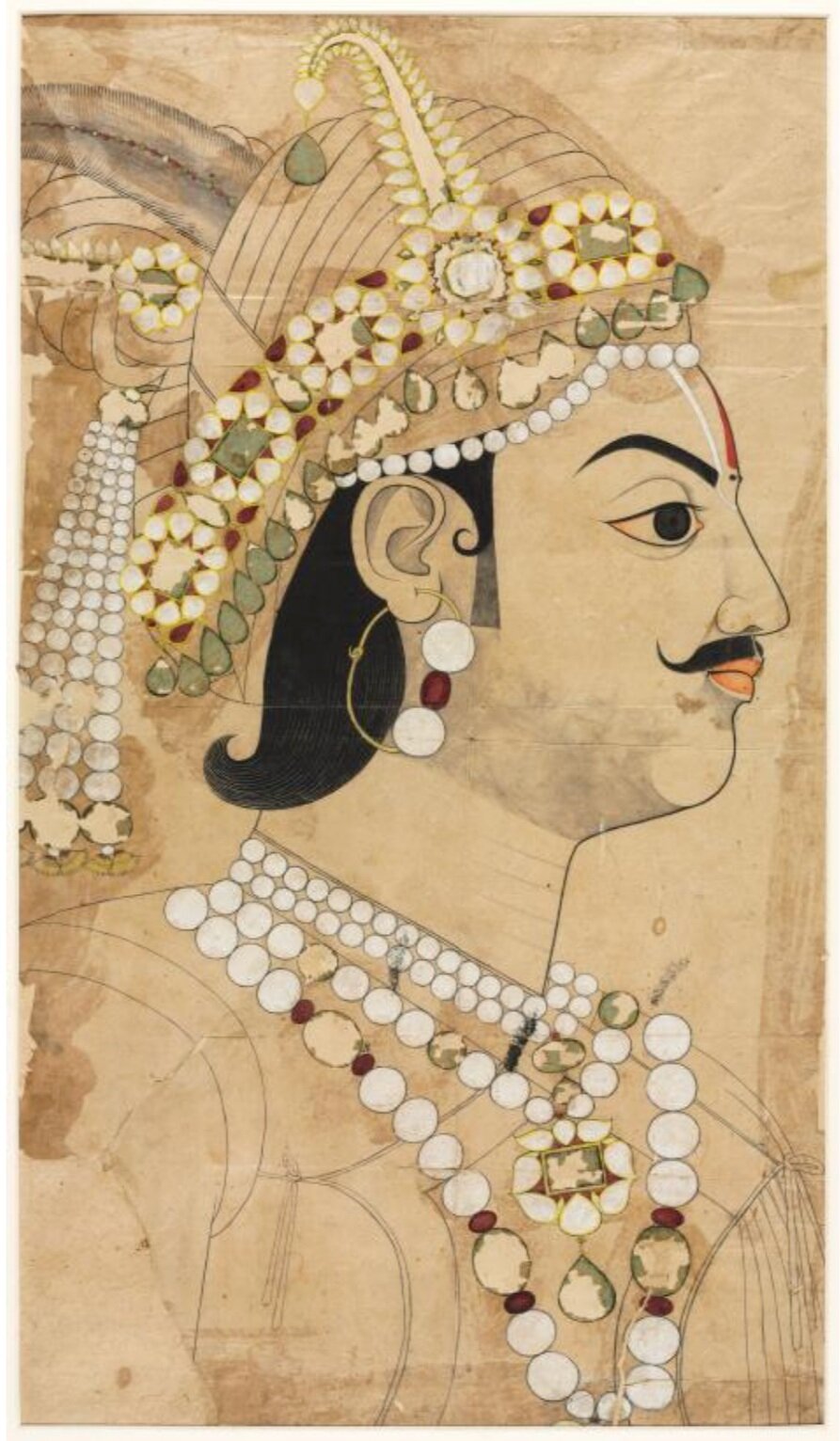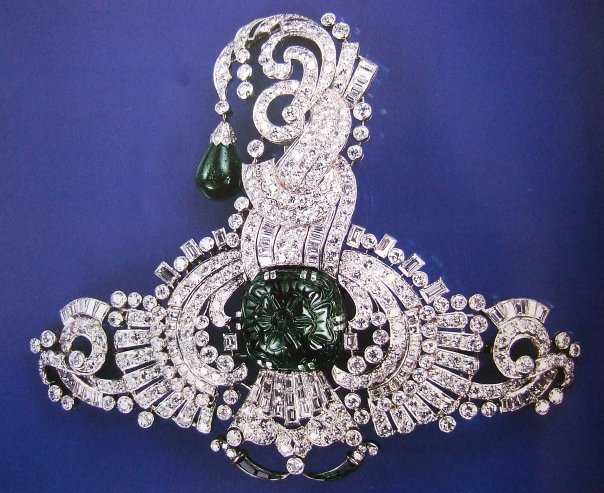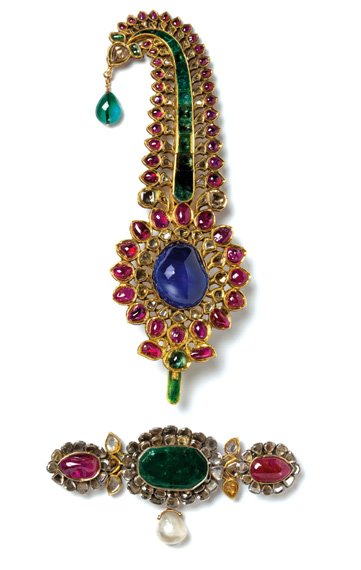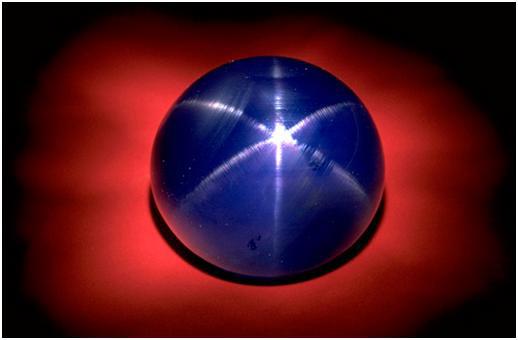Maharajas! The word maharaja, literally ‘great king’, conjures up a vision of splendor and magnificence. These princely rulers of India played an important role within a social and historical context and were patrons of the arts, both in India and Europe. That resulted in magnificent objects symbolic of royal status, power and identity.
According to an account by Alain Boucheron on his family business in the book “The Master Jewelers” that was cited in the Times:
"The flamboyant Maharajah... arrived at Boucheron's in 1927 accompanied by a retinue of 40 servants all wearing pink turbans, his 20 favorite dancing girls and, most important of all, six caskets filled with 7571 diamonds, 1432 emeralds, sapphires, rubies and pearls of incomparable beauty.”
Here's a look at the opulent world of the maharajas and their extraordinarily rich culture thought their jewels.
I have tried my best to attribute images to their creators and original sources. Please contact me if you know the source of images that are not attributed.
Maharaja of Patiala, Yadavindra Singh. Patiala Necklace.
Maharaja of Patiala, Yadavindra Singh wearing the famous Patiala Necklace. 1930s.
The famous Patiala Necklace was made for the Maharaja of Patiala, Bhupinder Singh.
Patiala Necklace weighs almost a 1000 carats, Patiala necklace was made for the Maharaja in 1928 by Cartier. The bib-like Art Deco necklace featured five rows of diamond-encrusted platinum chains and Burmese Rubies. It included as its centerpiece the famous De Beers diamond, a cushion-cut pale yellow diamond weighing 234.69 carats.
Close up of the famous Patiala Necklace featuring the De Beers diamond, a cushion-cut pale yellow diamond weighing 234.69 carats.
Bhupinder Singh, Maharaja of Patiala (1891-1938), 1911. From the photo of Carl Vandyk © Costa / Bridgeman Images
The Patiala Ruby Necklace/ choker. Ruby beads, oval cabochon and circular-cut rubies, old and single-cut diamonds, natural pearls, platinum (French marks), 13 ins., 1931, restored and restrung by Cartier Tradition in 2012, signed Cartier.
Maharani of Patiala wearing The Patiala ruby choker and Cartier necklaces along with other Art Deco jewels in 1931. Photo © National Portrait Gallery, London
The Patiala ruby choker: an Art Deco ruby, diamond and natural pearl choker necklace, Cartier, 1931. Offered in Maharajas & Mughal Magnificence on 19 June 2019 at Christie’s, New York.
The Koh-i-Noor Diamond
It was only in the early 19th Century, when the Koh-i-Noor reached the Punjab, that the diamond began to achieve its preeminent fame and celebrity.
Enter, Maharaja Ranjit Singh, popularly known as Sher-e-Punjab or Lion of Punjab.
It was not just that Ranjit Singh liked diamonds, and respected the stone’s vast monetary value; the gem seems to have held a far greater symbolism for him. Since he had come to the throne he had won back from the Afghan Durrani dynasty almost all the Indian lands they had seized since the time of Ahmad Shah. Having conquered all the Durrani territories as far as the Khyber Pass, Ranjit Singh seems to have regarded his seizure of the Durrani’s dynastic diamond as his crowning achievement, the seal on his status as the successor to the fallen dynasty. It may have been this, as much as the beauty of the stone, that led him to wear it on his arm on all state occasions. [Source: William Dalrymple / OutlookIndia]
Painting of Sikh Maharaja Ranjit Singh. Indian school 19 century. Image credit: The Royal Collection Trust ( addition of Koh-i-Noor bajubandh by Reena Ahluwalia for this educational blog). Maharaja Ranjit Singh is seen wearing the Koh-i-Noor set in his armband as an armlet. “Of all the owners of the Koh-i-Noor,” Historians Anita Anand and William Dalrymple write, “none made more of the diamond than Ranjit Singh”, who turned it into a symbol of his rule.
The world’s most famous, Koh-i-Noor is a diamond of monumental stature. Image: Compliled by Reena Ahluwalia, with Reena’s painting of the Koh-i-Noor diamond at it’s center. Shows Maharaja Ranjit Singh and Maharaja Duleep Singh of Punjab.
The magnificent and bejeweled Maharajas of the Royal Kingdom of Mysore. Image compiled by Reena Ahluwalia.
The diamond-clad, gem encrusted paintings of the Maharaja and Maharani of Royal Mysore. 60 x 40 inches, hand-painted on canvas by artist Reena Ahluwalia. C. Krishniah Chetty Crystal Museum. Bengaluru, India. Image: ©Reena Ahluwalia. The words Maharaja (great king) and Maharani (great queen) originates in Sanskrit (महाराज | महारानी). The paintings celebrate an unbroken jewelry heritage and the enduring significance these gems retain in the tapestry of Indian culture.
Jacques Cartier with Indian gemstone merchants, 1911, Cartier Archives. Since his first trip to India, in 1911, Jacques Cartier (1884-1942) had become familiar with the extravagant tastes of the maharajas. Fabulously rich and passionate about precious stones, the Indian princes stopped at nothing to satisfy their perpetual appetite for jewels. Image: Cartier Archives
Turban Ornament (jigha) of the Maharaja of Nawanagar. Belle Époque diamond jigha, 1907 and remodelled circa 1935. The turban ornament set with old baguette and pear-shaped diamonds, white gold, fitted with plume holder on the reverse, lower portion detachable and may be worn as a brooch. Image: Christie’s / The Al-Thani Collection
Drawing of the ceremonial necklace for the Maharajah of Nawanagar, 1931, London Cartier Archives. Jacques Cartier presented the Maharaja with a dazzling project. Sadly, the Maharaja of Nawanagar had little time to wear the “finest cascade of coloured diamonds in the World”. He died in 1933, two years after the necklace was delivered. Image: Cartier Archives
The Maharaja of Nawanagar. Image: Cartier.
The replica of the famous Cartier necklace created for the Maharaja of Nawanagar. The design is inspired by a 1931 piece Jacques Cartier crafted for the Maharaja of Nawanagar; that necklace no longer exists, so Cartier artisans worked from sketches and photographs from its archives. Image: the Hollywood Reporter
Turban Ornament or Brooch of the Maharaja of Nawanagar. ca. 1920, modified ca. 1925–35. Platinum, set with sapphire and diamonds. Image: Metropolitan Museum of Art.
Maharajah of Nawanagar wearing the emerald and diamond necklace created by Cartier in 1926, Cartier Archives.
Emerald and diamond necklace, containing 17 rectangular emeralds, 277 carats. The emerald in the pendant weighed 70 carats and was reputed to have come from the collection of a former Sultan of Turkey. Jacques Cartier set it in a Art deco piece for the Maharaja of Nawanagar. Image: Cartier. Green coloration in image added by: https://royal-magazin.de/
The 61.05 carat Tiger Eye Diamond in the Tiger Eye Turban Ornament. Cartier London, 1937
Platinum, diamond . Although the Cartiers were never technically diamond merchants, the deals they made and the work they did with some of the finest stones in the world played a key role in developing the firm’s international stature. In 1937, Maharaja Digvijaysinhji of Nawanagar asked Cartier to set the ‘Tiger Eye’, an unusual cognac-coloured diamond discovered in 1913 and sold by the firm to his predecessor Maharaja Ranjisinhji. Cartier designed a turban ornament around the gem, using baguette-cut diamonds to create an Art Deco look for this traditional Indian jewellery form. Image courtesy: Al Thani Collection
This stunning Art Deco ruby and diamond necklace (1937) was created by Cartier, commissioned by Maharaja Digvijaysinhji of Nawanagar.
A Belle Époque diamond devant de corsage brooch, Cartier, 1912. Christie’s New York.
Devant-de-Corsage brooch, 1912, Cartier. Pear brilliant-cut diamond of 34.08 carats, oval brilliant-cut diamond of 23.55 carats, modified marquise brilliant-cut diamond of 6.51 carats, heart modified brilliant-cut diamond of 3.54 carats, lily-of-the-valley old-cut diamond links, platinum and 18k white gold. Image: Christie’s
An Art Deco diamond Cliquet brooch, Cartier circa 1925. Offered in Maharajas & Mughal Magnificence on 19 June 2019 at Christie’s, New York. Credit: Christie’s
Maharaja of Baroda, Maharaja Sayajirao III painted by Raja Ravi Varma in 1881. Maharaja Fatesingh Museum. Image: The Royal Gaekwad Collection. The Maharaja is seen wearing the famous Baroda three-tier diamond necklace with Star of South and English Dresden diamonds.
From The Treasury of Baroda - a magnificent three-tired diamond necklace, shown here worn by the Maharani of Baroda, Sita Devi in 1948. Khande Roe, Gaekwar of Baroda, had this necklace made to display two important diamonds - The 128.48-carat Star of the South (fancy light pinkish-brown) and the 78.5-carat English Dresden below it. Image taken in 1880.
Maharani Sita Devi of Baroda wearing a magnificent three-tired diamond necklace, image taken in 1948. Khande Roe, Gaekwar of Baroda, had this necklace made to display two important diamonds - The 128.48-carat Star of the South (fancy light pinkish-brown) and the 78.5-carat English Dresden below it.
The famous three-tiered diamond necklace featuring the 128.48-carat Star of the South (fancy light pinkish-brown) and the 78.5-carat English Dresden below it. Image: Alamy
The Gaekwar of Baroda. Diamond necklace made to display both the 128.48-carat "Star of the South" and the 78.5-carat "English Dresden" below it.
Maharaja of Baroda, Sayaji Rao III. 1889. Image: National Portrait Gallery. Wearing his famous seven row diamond necklace and other diamond ornaments. In the late 19th and early 20th centuries, virtually every Indian Maharaja commissioned state photographs of themselves wearing their most important jewelry as a symbol of their power and position.
The famous Baroda Diamond Necklace. This magnificent ceremonial necklace with diamonds and emeralds was worn by the Maharaja (King) of Baroda, India in the 1860s. It was said to have been broken up in the 1940s to provide stones for anklets for the new Maharani (Queen) of Baroda, Sita Devi. Image compilation by: https://royal-magazin.de/
George Landseer (1834-1878). Portrait of H. H. the Maharaja Tukoji Rao II Holkar of Indore, seated small full-length on a cushion. Credit: Christie’s
The superb clarity and color of emerald ranks it among the world's finest Colombian emeralds. It was once the centerpiece of an emerald and diamond necklace belonging to the Maharani of the former state of Baroda , India. It originally weighed 38.4 carats, but was recut and set in a ring designed by Harry Winston, where it is surrounded by 60 pear-shaped diamonds totaling 15 carats. Photo: Smithsonian
Van Cleef & Arpels, Paris, 1949–50. The "Baroda Set" ordered by the Maharani of Baroda, “The Indian Wallis Simpson”, wife of the Maharaja of Baroda. This impressive suite of jewellery was designed by Jacques Arpels for Sita Devi, the second wife of Maharaja Pratapsinh Gaekwad of Baroda. It consists of 13 pear-shaped Colombian emeralds – 154 carats in total – suspended from diamonds set in the shape of a lotus flower. All the gems were all supplied by the Maharani and belonged to the Baroda Crown Jewels.
The Maharani of Baroda at a party given at Vagenende Restaurant in Paris in June 1966, wearing a grey pearl and diamond bracelet by Cartier. Photo © AGIP / Bridgeman Images Via Christie’s.
Portrait of Maharaja Madho Singh. Attributed to Sahib Ram. Maharaja Madho Singh (r.1750-1768) of the Kachwaha Dynasty of Jaipur. Multiple necklaces of white pearls and emeralds flow over his sheer semi-transparent mauve and gold jama. His finely trimmed upturned mustachio forming an abstract curving interplay with his stippled ax-blade sideburn and shadowlike hint of a beard. A mauve and gold pagri (turban) with highly ornamented aigrette contains strands of large emeralds and gold. Depicted bust length with his right arm flexed over a white and gold embroidered coverlet over a window ledge. Credit: Sotheby’s
Portrait of Maharaja Madho Singh of Jaipur (1750-1768) by Ram ji, Jaipur, north India, circa 1760-70. Credit: Christie’s
The meeting of Maharaja Mudhoji Bhosle sen sahib, Rajah of Nagpur and Maharaja Ishwari Sen Bahadur, Rajah of Mandi school of Ghulam 'Ali, Delhi, early 19th century. Credit: Christie’s
One of the highlights for me at 'Diamonds: A Jubilee Celebration' exhibition was this incredible 2000-carat, King Edward VII's diamond encrusted sword. Set with more than 700 white and yellow diamonds, the sword was presented to King Edward VII by the Maharajah of Jaipur, Sawai Sir Madho Singh Bahadur, to mark the king's coronation in 1902. Made from steel and gold, enamelled in blue, green and red, the diamonds are set in a design of lotus flowers and leaves. Photo:© PA
Maharaja Bhupendra Singh of Patiala. Image: © National Portrait Gallery, London
THE HILT OF THE STATE SWORD OF MAHARAJA JAGATJIT SINGH OF KAPURTHALA (1872-1949) NORTH INDIA, CIRCA 1900. Enamelled and set with diamonds, the lion-headed pommel set with ruby eyes, one side of the hilt set with a raised and molded crest of Kapurthala and the other side with the words ‘Kapurthala State’ set in diamonds. Credit: Christie’s
An enamel and gold hunting case pocket watch. Champlevé enamel portrait depicting Maharaja Bhupinder Singh of Patiala, enamel coat of arms on the reverse, white enamel dial, 18k gold, circa 1930. Image: Christie’s
Maharaja Bhupendra Singh of Patiala. 1911. Wears an aigrette or Sarpech by Cartier and various other turban ornaments. While the front of aigrette is set with diamonds, rubies and emeralds, the back shows the intricacy of craftsmanship with foliate motifs of red, green and blue enamel. He also wears a necklace of fourteen strands of natural pearls.
A single-strand natural pearl and diamond necklace, Cartier. Graduated strand of 37 natural pearls of 14.00 to 7.05 mm, old-cut marquise-shaped diamond, platinum (French marks). Image: Christie’s
An Art Deco emerald, sapphire and diamond belt buckle-brooch, Cartier. Octagonal step-cut emerald of 38.71 carats, buff-top calibré-cut sapphires and emeralds, old and single-cut diamonds, platinum and 18k white gold. Many of Cartier’s finest jewels from this period were inspired by Indian architecture, gems and jewels. The calibré-cut sapphire trim and diamond detail are reminiscent of ornate archways present in Mughal palaces and royal quarters. Image: Christie’s
Bejeweled Maharaja of Mysore, Krishnaraja Wadiyar IV. Portrait by K. Keshavayya (1906). © V&A Images/Victoria and Albert Museum, London.
The Maharaja of Mysore. 60 x 40 inches, hand-painted on canvas by artist Reena Ahluwalia. C. Krishniah Chetty Crystal Museum. Bengaluru, India. Image: ©Reena Ahluwalia. The word Maharaja (Sanskrit: महाराज) means great king or ruler. The painting show a diamond-clad body of Maharaja, bejeweled with historically accurate gems and jewels. Meticulously crafted, every inch of the canvas narrates a tale embedded with diamonds, gemstones, and gold.
Krishnaraja Wadiyar III, Maharaja of Mysore. 1866. Credit:
Maharaja Chamarajendra Wadiyar X of Mysore. He was the twenty-third maharaja of the Kingdom of Mysore, between 1868 and 1894. Image: Wikipedia Commons.
Procession of Krishnaraja Wodeyar III through Mysore, 1825–1830. The bejewelled Maharaja is on an elephant leading a religious procession in honour of the god Shiva. He preceded by dancing-girls, musicians, chauri-bearers and men carrying illuminations and letting of fireworks. British military commanders are also shown. Credit: V&A.
An emerald, ruby and diamond set gold state pen case and inkwell. (Davat-i Dawlat). Deccan, Central India, Late 16th century. A sacred bird (hamsa) engraved under the inkwell. Image: Christie’s.
Deccan. 19th century. A gem-set Jigha. The openwork hinged body set with foiled diamonds and a large central octagonal carved emerald between four smaller carved emeralds, topped with a curling jigha and hanging spinel, the reverse with polychrome enamelled floral details and birds, compartment for jigha, suspension cords. Christie’s.
An Indian enamelled and gem-set pendant, Deccan, 17th-18th century, with later pearl chain. Image: Sotheby’s. Rendered in the form of a bird with outstretched wings and tail feathers, the breast mounted with a diamond medallion, gold body and neck set with cabochon rubies and emeralds, the ruby beak, wings and tail feathers with attached drop-pendant pearls, the reverse of the wings and tail decorated with dark blue, green, yellow, red and white enamelling, loops attaching later gold and pearl suspension chains.
Waist belt mid-nineteenth century or earlier. Gold, diamonds, emeralds and rubies. Presented for Queen Alexandra, when Princess of Wales by Chamarajendra Wadiyar X, Maharaja of Mysore in 1875, during the Prince of Wales's tour of India in 1875-76. A hinged waist belt made of a gold framework inlaid with diamonds, rubies and emeralds. The inner rim of the belt is engraved with patterns of lotuses and peacocks. The front of the belt imitates a buckle, where a small hook that actually holds the two halves of the belt together is concealed. Belts of this type would be worn by women in India, in particular South India. Image: Royal Collection Trust.
The Maharani of Mysore. 60 x 40 inches, hand-painted on canvas by artist Reena Ahluwalia. C. Krishniah Chetty Crystal Museum. Bengaluru, India. Image: ©Reena Ahluwalia. The word Maharani (Sanskrit: महारानी) means great queen or ruler. The painting show a diamond-clad body of Maharani, bejeweled with historically accurate gems and jewels. Meticulously crafted, every inch of the canvas narrates a tale embedded with diamonds, gemstones, and gold.
Three bejewelled royal women from the Court of Mysore in Southern India was painted by Thomas Hickey in circa. 1805. Shown in white sari on right is Rami Lakshmi Ammani, queen of the Wadiyar ruler of Mysore and adoptive grandmother of Krishnaraja Wadiyar III. Credit: Sotheby’s
Detail of repousse gold hair braid ornament, Jadai Nagam. Tamil Nadu. 19th Century. Image: Bonhams.
Dancing Shiva Pendant. Tamil Nadu. 20th century. Image: GIA
Portrait of Rani Mudai, wife of the last Raja of Coorg, Vira Rajendra Wodeyar (1808-62, deposed 1834), with whom the Lingayar dynasty ended. She is dressed in a dark blue choli and a dark red and gold sari. She wears elaborate jewellery and has her hands folder across her waist. Credit: V&A
THE 'INDORE SAPPHIRE' TAVEEZ BEAD PENDANT NECKLACE, MOUNTED BY CARTIER. Oval-shaped sapphire taveez bead of 23.20 carats, 18th century, later added 18k white gold fine link chain. Owned by Maharaja Yeshwant Rao Holkar II of Indore. Image: Christie’s
Bernard Boutet de Monvel, The Maharadjah (Maharaja) of Indore, Oil on canvas, 1933. 85 x 85 cm, Estimate : 300.000 – 500.000 € and sold in 2016 for €2,499,000. Image: Sotheby’s. Boutet de Monvel’s depiction of the Oxford-educated Maharajah of Indore, whose likeness was destined for the walls of Manik Bagh, his Indian palace. In this six-foot, stunningly ethereal composition from 1933, the young man, dressed in traditional costume, sits on a white throne against a pale background, the whole brought to vivid life by shots of shimmering colour: a garnet-hued turban on his head, two magnificent 47-carat diamonds (the Pears of Indore) around his neck, along with a luxurious fabric and a striped sabre scabbard at his feet.
Bernard Boutet de Monvel, The Maharadjah (Maharaja) of Indore, Oil on canvas, 1933. 85 x 85 cm, Estimate : 300.000 – 500.000 € and sold in 2016 for €2,499,000. Image: Sotheby’s. Maharaja is wearing two magnificent 47-carat diamonds (the Pears of Indore) around his neck.
Maharaja Sawai Jai Singh Bahadur of Alwar, born 1882. Besides his traditional Indian ornaments, he wears the star insignia of the Indian orders granted to him by the British (Raj), then considered a part of the royal regalia.
Maharaja Sayaiji-Roa, Gaekwar, Baroda. 1889. Wearing his famous seven row diamond necklace and other diamond ornaments. In the late 19th and early 20th centuries, virtually every Indian Maharaja commissioned state photographs of themselves wearing their most important jewelry as a symbol of their power and position. Image: National Portrait Gallery.
A cross cultural exchange. Miniature painting. National Gallery of Modern Art, New Delhi, India. 1902. Interpreted by an Indian artist (unknown), King Edward VII and Queen Alexandra, depicted as the King-Emperor and Queen-Empress of India.
Bejeweled Portrait of Maharaja Pratap Singh (1764–1803). Maharaja Pratap Singh came to the throne in the princely state of Jaipur in 1778 at the age of 14, about 15 years before this portrait was painted. He was a poet and patron of the arts known for commissioning the famous “Palace of the Winds” in Jaipur. At his court he maintained an atelier of about 50 painters, among whom was a Muslim master, Sahib Ram, to whom this painting is attributed. Credit: Cleveland Art
Raja Sawant Singh and Bani Thani (as Krishna and Radha). 1780. Image: Philadelphia Museum of Art.
Kishengarh miniature painting, characterized by exaggerated profiles. Both with traditional Mughal-Rajput-style ornaments consisting of pearls, emeralds and rubies. They wear elaborate robes and precious jewels. Their intricate ornamentation—from the flower on Radha’s forehead to the anklet visible beneath Krishna’s robe—elevates them to royal status, hints at their amorous relationship, and emphasizes their divine identities.
Diamonds and emeralds set in platinum. Aigrette (also known as Sarpech - Turban ornament). Private collection. 1930
The state durbar decorated elephant, with attendants of the Maharaja of Mysore. Royal India.
The Maharajah of Kolhapur.
End of 19th century rendering by Chaumet staff designer, of a proposed ensemble of ornaments for the uniform of a Maharaja. Rendering shows the use of diamonds, emeralds and pearls. Courtesy Chaumet.
1925. Rendering by Charles Jacqueau of Cartier for a headdress ornament for a turban, a project suggested by Maharaja of Kapurthala. Courtesy Cartier.
Jade case, 1700-1800. Jade, rubies, emeralds, diamonds, steel. © V&A Images/Victoria and Albert Museum, London.
Maharaja Dilip Singh of Lahore. 1852. Portrait by George Beechy. Shown here at age fifteen. Amongst many other jewels, he is wearing a diamond Sarpech (Indian turban ornament) or aigrette with three plumes and a centrally placed emerald.
Turban ornament- gold, diamonds, rubies, emeralds, sapphire, pearl. Image: V&A
The Maharaja of Darbhanga. Royal India.
The Maharaja of Alwar. (1882-1937). Royal India.
Renowned for its impressive size, intense color and sharp star, the Star of Asia, which weighs 330 carats, is one of the world’s finest star sapphires. It originated from Burma and is said to have belonged to India’s Maharajah of Jodhpur. Photo by Chip Clark
The Maharaja of Jammu & Kashmir. Royal India.
The Maharana of Udaipur. Royal India.
Emerald necklace & pendant that belonged to Maharani Prem Kumari, wife of the Maharaja of Kapurthala. 1910
Sprays of flowers turban jewel. Once belonged to the Maharaja of Jaipur. The aigrette is set with rubies, emeralds and pale beryls on one side, and the same stones with the addition of diamonds on the other. The stem and the sides of the jewel are enamelled in translucent green.
Prince, The Gaekwar of Baroda. Princely India.
Diamond necklace made to display both the 128.48-carat "Star of the South" and the 78.5-carat "English Dresden" below it. Royal India.
Portrait of Raja Jagat Singh of Nurpur (reigned 1618-46) probably 1619 attributed to Bichitr. Credit: Cleveland Art
In the past I have authored posts on, Bejeweled Maharaja & Maharani of Mysore, Koh-i-Noor Diamond, Diamonds on World Postage Stamps, Top Ten - Largest Diamonds Discovered In The World, Splendors of Mughal India, The Magnificent Maharajas Of India, Mystery & History Of Marquise Diamond Cut, Ór - Ireland's Gold, The Legendary Cullinan Diamond, Bejeweled Persia - Historic Jewelry From The Qajar Dynasty, Famous Heart-Shaped Diamonds, Type II Diamonds, Green Diamonds, Red Diamonds and more. Over years, I have spent countless hours in self-driven studies on diamond, jewelry history and research. I wrote these blogs for a simple reason - to share my collected knowledge with all who are interested, so that more can benefit from it. Take a look and enjoy! -- Reena


